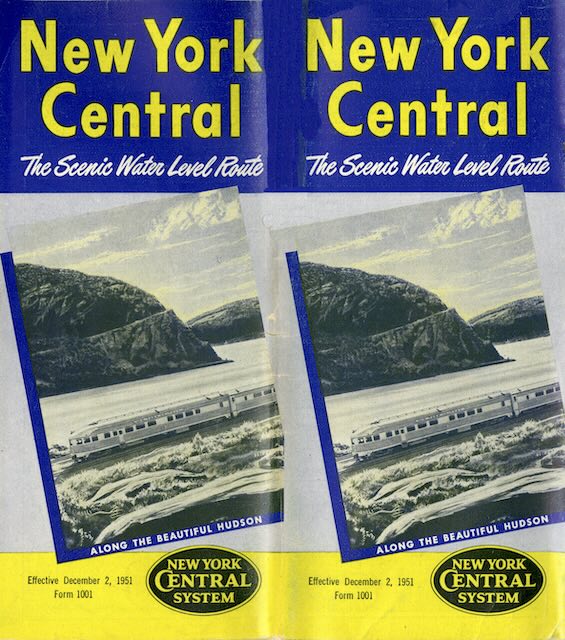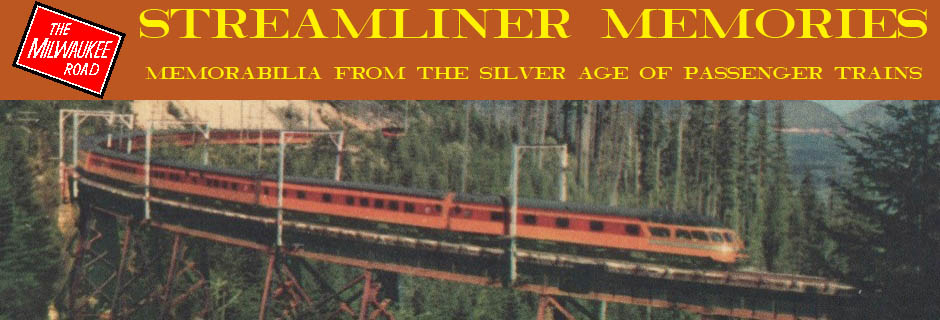Despite having potentially the fastest connections, Rock Island/Southern Pacific dropped out of the coast-to-coast through-car service by the end of 1951. In the Los Angeles market, that left the Santa Fe with the 20th Century/Chief connection and Union Pacific with New York Central trains connecting with the Los Angeles Limited.
 Click image to download a 31.4-MB PDF of this 52-page timetable.
Click image to download a 31.4-MB PDF of this 52-page timetable.
New York Central and Pennsylvania’s fastest trains could go from New York to Chicago in 15-1/2 hours. Santa Fe and Union Pacific’s fastest trains could go from Chicago to Los Angeles in 39-3/4 hours. Adding the two together (as the Pennsylvania did when it first proposed a coast-to-coast train in 1937) and it seems reasonable that coast-to-coast service could take under 57 hours — but not if the railroads used slower trains such as the Chief or Los Angeles Limited.
The problem was that most people didn’t want to go coast to coast, and those who only wanted to go to Chicago who were able to pay for the fastest trains wanted to arrive in the morning and leave in the evening, maximizing the number of business hours during their stay. Thus, trains like the Super Chief and City of Los Angeles arrived many hours before and left many hours after trains like the 20th Century depart or arrived in Chicago. Although Pennsylvania’s original proposal was for a coast-to-coast train, that never worked out, so the time required for coast-to-coast through Pullmans tended to be around 65 hours.
While the Golden State Route dropped out, there were still through Pullmans to San Francisco as well as Los Angeles. One route, of course, was via the California Zephyr while the other was on the San Francisco Overland. The Zephyr route was two hours longer eastbound and one hour longer westbound than the Overland, though the Overland route could have been much faster if it didn’t require an eight-hour layover in Chicago westbound and a 5-1/2-hour layover eastbound.
It is also worth noting that the through cars to Los Angeles went every day while the San Francisco through cars were every other day (with Pennsylvania through cars on the other days). That means there were two through cars on each of the Los Angeles routes, the other being from the Pennsylvania. As with the New York Central, the Pennsylvania cars went via the Chief and Los Angeles Limited, and as with the New York Central the Pennsylvania connection to the Chief was the premiere train, the Broadway, while the connections to the LA Limited were secondary trains.

Amtrak was spit balling this idea 25 years or so ago, but IMO one of the stumbling blocks would have been equipment. All the trains west of Chicago use Superliner equipment, while the east is mostly “low level” rolling stock. Having a common car type would mean that any piece of equipment could be deployed anywhere in the system as demand dictates.
Going back to the early 50s though, businessmen were abandoning the rails either because they wanted more time at home, or in some cases I am sure were being pressured by management to save money on hotels by keeping their trips shorter. I am sure also that there was an element of “you can’t take the train because I don’t want you incommunicado for 3 days.”